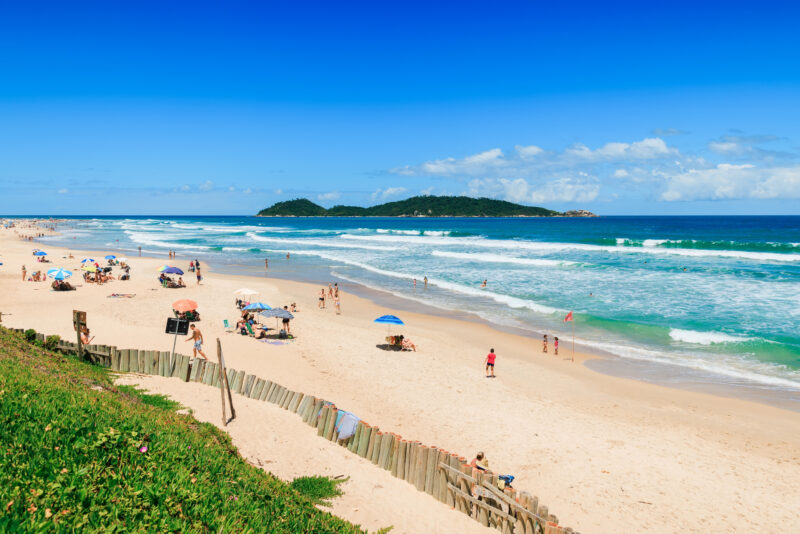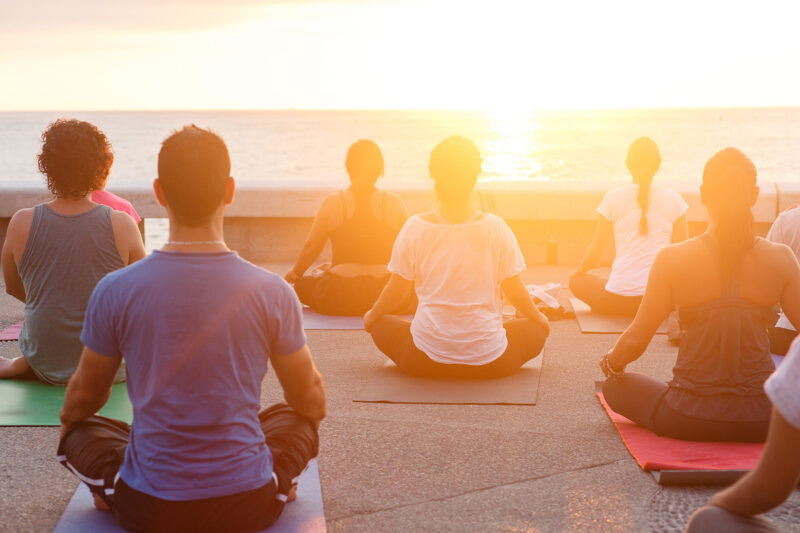Being a surfer in Rio de Janeiro means accessing a whole different side of the city. It’s waking up before the sun, before the traffic and music and samba spill into the streets, and sharing a quiet moment with the ocean—a rare pause in a place that’s almost always buzzing. With its long sandy stretches, jungle-backed coves, and variety of breaks, Rio is one of the best surf meccas in Brazil. From Arpoador’s beginner-friendly waves to the pro-level barrels of Itacoatiara, surfing here is as much about experiencing the city’s beach culture as it is about the waves.
Arpoador

Arpoador is the most accessible surf spot in the city, especially for beginners. Surf schools crowd the lineup most mornings, and it’s where most tourists go to try the sport for the first time. The wave itself is a clean left that peels off the rocks, but space is limited, and sometimes, the sea can feel hectic. It’s also one of the only places in Rio where you can surf at night under floodlights. For many, catching their first wave at Arpoador is a rite of passage, which makes it a must-visit for anyone looking to learn.
Ipanema

One of Rio’s most iconic beaches, Ipanema delivers surfable waves right in the heart of the city. Things here shift quickly with the tides—sometimes they’re mellow enough for beginners, while during bigger swells they challenge seasoned surfers. At other times, the sets crash too close to shore for much of a session at all. Still, the energy of surfing in front of Rio’s skyline, with the Dois Irmãos mountains rising in the distance, makes for a worthy paddle out. For visitors, Ipanema offers the quintessential Rio beach experience: catch a few waves, grab a fresh coconut from a beach vendor, and stay for sunset, when the whole shore breaks into applause as the sun dips behind the mountains.
São Conrado

Tucked below Pedra da Gávea and Pedra Bonita, São Conrado comes with a dramatic view of the rocky monoliths that surround the city. On big days, waves here break fast and hollow, producing barrels that have earned legendary status among local surfers. As big-wave rider Carlos Burle puts it, this is a beach that can produce “altos tubos”—deep, powerful tubes.
With that said, it’s not very beginner-friendly. But on smaller days, you’ll still see some locals paddling out, and the atmosphere on the sand is lively, with hang gliders landing right on the beach from the ramp at Pedra Bonita. São Conrado is easy to reach from Rio’s touristy South Zone; it’s just a short drive through the tunnel from Leblon.
Joatinga

Hidden between São Conrado and Barra da Tijuca, Joatinga is a small cove inside a residential neighborhood, accessible only by a narrow road through a gated community. From there, a steep, rocky path leads down to the sand. Despite all the exclusivity, the atmosphere is very much laidback. The beach is open to the public, but only those in the know make the effort to come—it has the feel of one of Rio’s better-kept secrets, and it’s one of my personal favorites.
Here you’ll see surfers sharing waves with bodyboarders, dogs running along the sand, and locals playing endless rounds of footvolley. The surf is best reserved for those with some experience; sometimes you might even catch a glimpse of pro surfer Gabriel Medina playing around on the short, powerful waves. Because of its tucked-away location, the beach stays relatively quiet during the week, though it can fill quickly on summer weekends.
Praia da Macumba
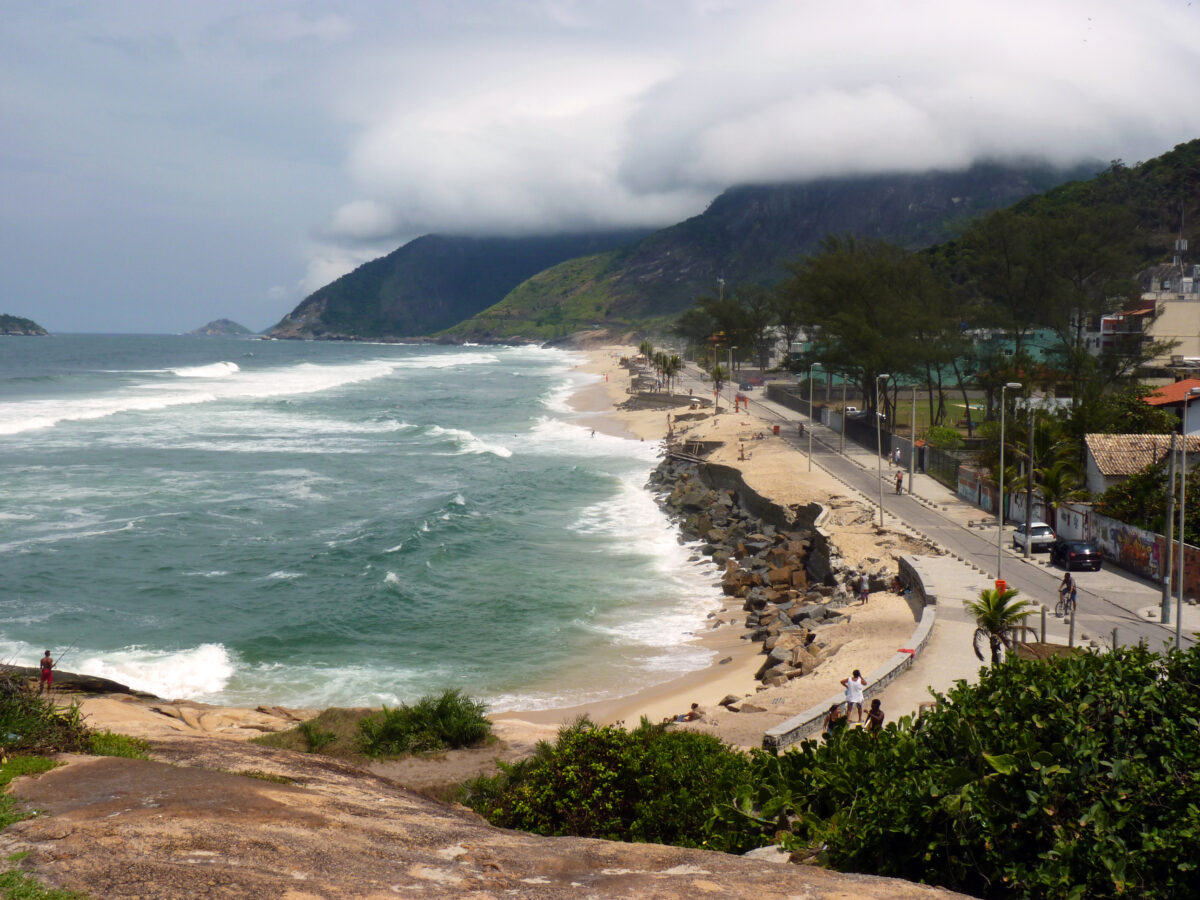
About an hour west of Ipanema, you’ll find Praia da Macumba, one of Rio’s most inviting surf beaches, with plenty of peaks along the sand and a more laidback vibe than the city breaks. The waves here are consistent throughout the year. On smaller swells, Macumba can be ideal for longboarding, with mellow rides that suit beginners and intermediate riders. When the surf picks up, the waves start breaking farther out, giving more advanced surfers room to charge while keeping things manageable closer to shore.
It’s also one of the friendliest surf beaches in Rio. You’ll see surf schools setting up with students, longboarders cruising along the points, and locals paddling out for a few waves before heading to the beach kiosks. Here you can surf a few sessions, refuel with an açaí, and watch the sets roll in until the sun sets.
Prainha
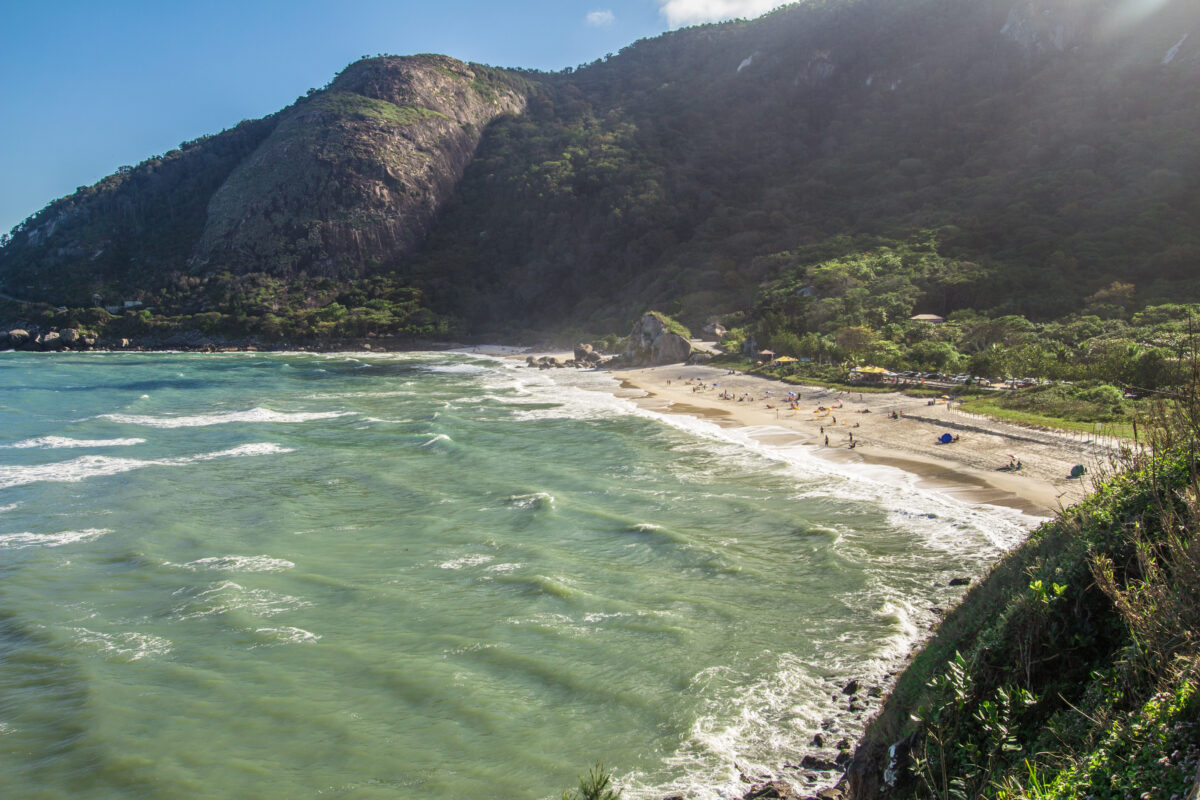
Keep heading west past Macumba and the coast turns wild again. Prainha is tucked between two rocky headlands and backed by dense Atlantic rainforest, meaning no development on the sand. This makes it one of the more beautiful surf spots in Rio. And it’s known for being the most consistent break in the city. Even when the rest of Rio is flat, Prainha often still delivers. The waves draw committed local surfers, many of whom make the drive over from the city. Best for experienced surfers, it’s the kind of place where you can spend the whole day in the water, surrounded by nothing but jungle and sea.
Grumari
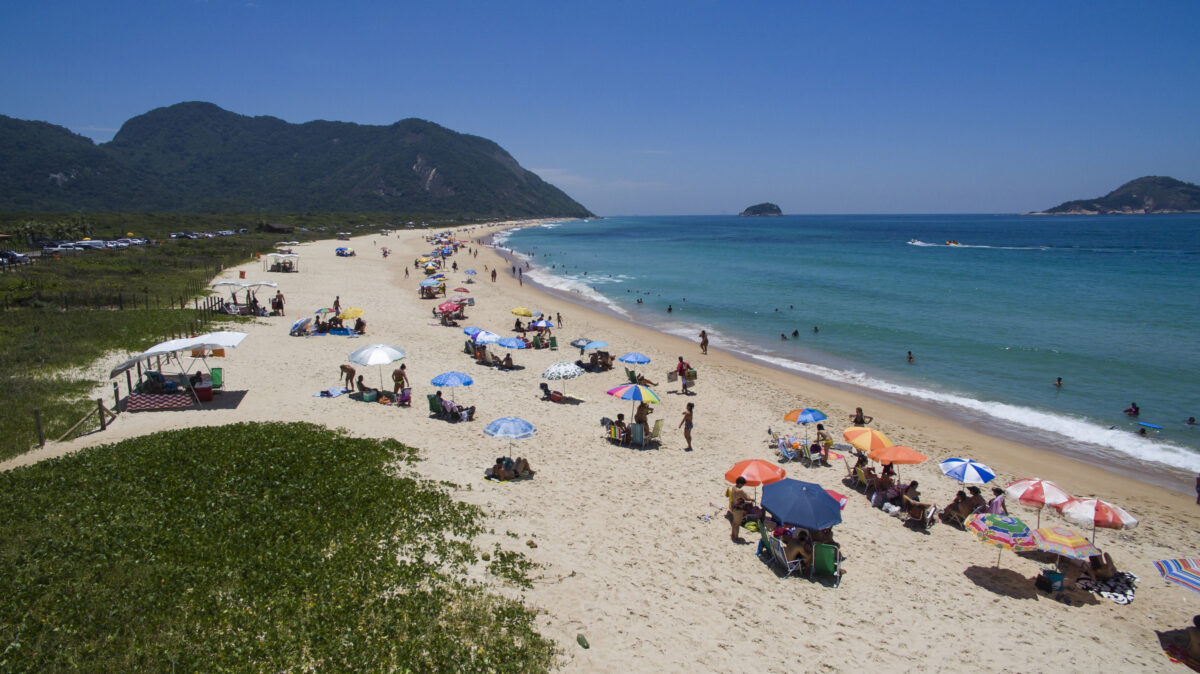
Just beyond Prainha, the road winds deeper into Rio’s protected coastline and drops into Grumari, a long crescent of sand surrounded by an environmental reserve. With forested hills as a backdrop and no high-rises in sight, the beach feels untouched compared to Rio’s urban stretches. The surf is versatile, with waves that range from playful to powerful depending on the swell. Big-wave champion Burle himself sums it up best: “In Grumari, you’ll find waves of all sizes.”
I like coming here even though I don’t surf. Grumari is a true escape from the city—cell service often cuts out, leaving you fully present in nature. There are a few simple beach kiosks for post-surf snacks, and in the nearby fishing village of Barra de Guaratiba, you’ll find some of the best seafood restaurants in Rio, perched on the hillside with sweeping views of the surrounding mangrove.
Itacoatiara

Across the bay from Rio in the neighboring city of Niterói, you’ll find a long beach with the biggest swells I’ve seen since moving here. Framed by dramatic rocky headlands, it’s a lovely spot known for its powerful and hollow waves. Advanced surfers come for the big drops and barrels. The currents can be intense, so it’s best approached with caution, even if you’re a strong swimmer.
For less experienced surfers, the edges of the beach can offer smaller, more manageable waves, while the main break in the center is reserved for those who can handle serious power. Itacoatiara also hosts surf contests, including the Itacoatiara Pro bodyboarding championship, which brings in top riders from Brazil and abroad.
Saquarema

About two hours northeast of Rio, Saquarema is often referred to as the “Brazilian Hawaii” by those in the know. That’s because surfing here dates back to the early days of the sport in Brazil, and today it remains the country’s most storied surf town. The waves are powerful, consistent, and long, with Itaúna Beach producing the kind of waves that put Brazil on the world surf map.
That being said, Saquarema is also the Brazilian stop on the World Surf League Championship Tour. During contest season, the town transforms into a surf-themed party, with massive crowds lining the beach to cheer on local heroes like Gabriel Medina, Filipe Toledo, and Tatiana Weston-Webb.
For visiting surfers, respect goes a long way: show patience, and you’ll find your wave. Whether you paddle out or just watch from the sand like I do, Saquarema feels like the heart of Brazilian surf.
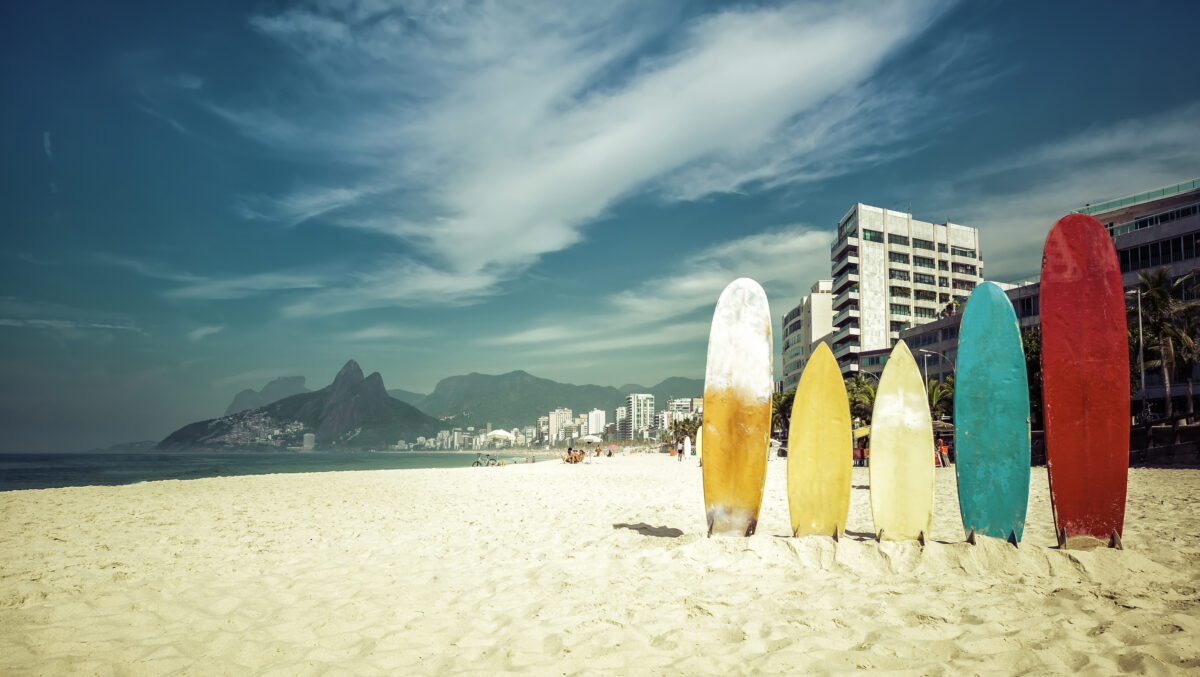
When to Surf in Rio
The best time to surf in Rio is during the winter months (April to October), when waves are more consistent and conditions line up for the city’s best sessions. Summer (December to March) tends to bring smaller surf and more wind, though you can still score fun days across the beach breaks.
Weather and Conditions
Rio has warm weather all year, with daytime temperatures usually between 77 °F to 86 °F. The ocean stays comfortable, ranging from 70°F to 80 °F. Rain is most common from December to March, but even then, mornings can be calm before the winds arrive. You’ll find waves year-round, though winter (April–October) brings the bigger swells that make Rio stand out as a surf destination.


